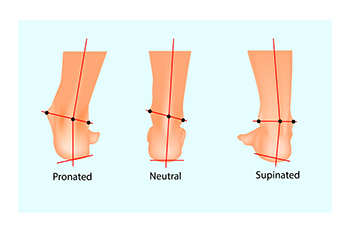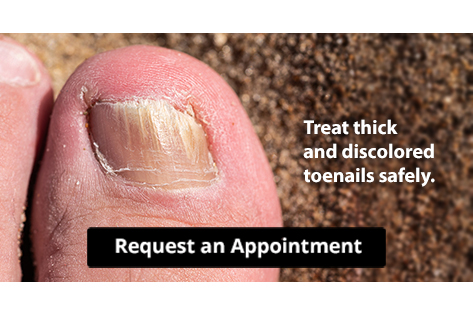
Common reasons people can break a toe can include a heavy object dropping on one of them, or it may happen from stubbing it into a piece of furniture. There is no mistaking a broken toe when it happens, as there is immediate pain, bruising, and swelling. Additionally, it is often difficult to walk, and mild relief may be found when the foot is frequently elevated. It is beneficial to have an X-ray performed which can confirm the fracture, and determine its severity. Patients may find success in using the buddy taping method as a possible remedy for their broken toe. This is done by taping the affected toe to the toe next to it, which can generally provide the stability that is needed as it heals. Severely broken toes may have a bone protruding from them and will require medical attention. If you have a broken toe, it is suggested that you visit a podiatrist who can correctly diagnose it, and offer the treatment method that is right for you.
A broken toe can be very painful and lead to complications if not properly fixed. If you have any concerns about your feet, contact one of our podiatrists from Comprehensive Foot & Ankle Center of South Jersey. Our doctors will treat your foot and ankle needs.
What to Know About a Broken Toe
Although most people try to avoid foot trauma such as banging, stubbing, or dropping heavy objects on their feet, the unfortunate fact is that it is a common occurrence. Given the fact that toes are positioned in front of the feet, they typically sustain the brunt of such trauma. When trauma occurs to a toe, the result can be a painful break (fracture).
Symptoms of a Broken Toe
- Throbbing pain
- Swelling
- Bruising on the skin and toenail
- The inability to move the toe
- Toe appears crooked or disfigured
- Tingling or numbness in the toe
Generally, it is best to stay off of the injured toe with the affected foot elevated.
Severe toe fractures may be treated with a splint, cast, and in some cases, minor surgery. Due to its position and the pressure it endures with daily activity, future complications can occur if the big toe is not properly treated.
If you have any questions please feel free to contact our offices located in Cherry Hill, Voorhees, Atco, and Turnersville, NJ . We offer the newest diagnostic and treatment technologies for all your foot and ankle needs.




